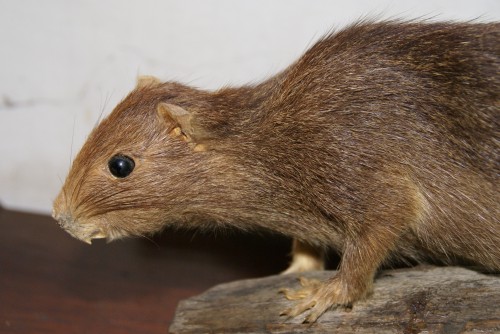
Capromys sanfelipensis
Capromys sanfelipensis NatureServe Explorer Species Reports — NatureServe Explorer is a source for authoritative conservation information on more than 50,000 plants, animals and ecological communtities of the U.S and Canada. NatureServe Explorer provides in-depth information on rare and endangered species, but includes common plants and animals too. NatureServe Explorer is a product of NatureServe in collaboration with the Natural Heritage Network.
ITIS Reports — Capromys sanfelipensis ITIS (the Integrated Taxonomic Information System) is a source for authoritative taxonomic information on plants, animals, fungi, and microbes of North America and the world.It is bordered to the north by the Arctic Ocean, to the east by the Atlantic Ocean, to the southeast by South America and the Caribbean Sea.
FWS Digital Media Library — The U.S. Fish and Wildlife Service’s National Digital Library is a searchable collection of selected images, historical artifacts, audio clips, publications, and video.The San Felipe hutia, also known as the little earth hutia, formerly found in Cuba, is listed on the 2008 IUCN Red List as Critically Endangered, possibly extinct.The San Felipe Hutia) is one of the five species of the genus Mesocapromys (Upham & Borroto-Páez, 2017). With the exception Key region: Greater Antillean moist and dry forests. Range: Cuba. The little earth hutia is a very poorly known species that was first discovered in 1970 on a single.
| Status | Date Listed | Lead Region | Where Listed |
|---|---|---|---|
| Endangered | 05/16/1986 | Foreign (Headquarters) | Wherever found |
- Countries in which the the little earth hutia, Wherever found is known to occur: Cuba
| 05/16/1986 | 51 FR 17977 17980 | Determination of End. Status for 8 Foreign Mammals, Leadbeaters Possum, etc.; 51 FR 17977-17980 |
| 10/25/1985 | 50 FR 43420 43423 | Proposed End. Status for 8 Foreign Mammals; 50 FR 43420-43423 |












